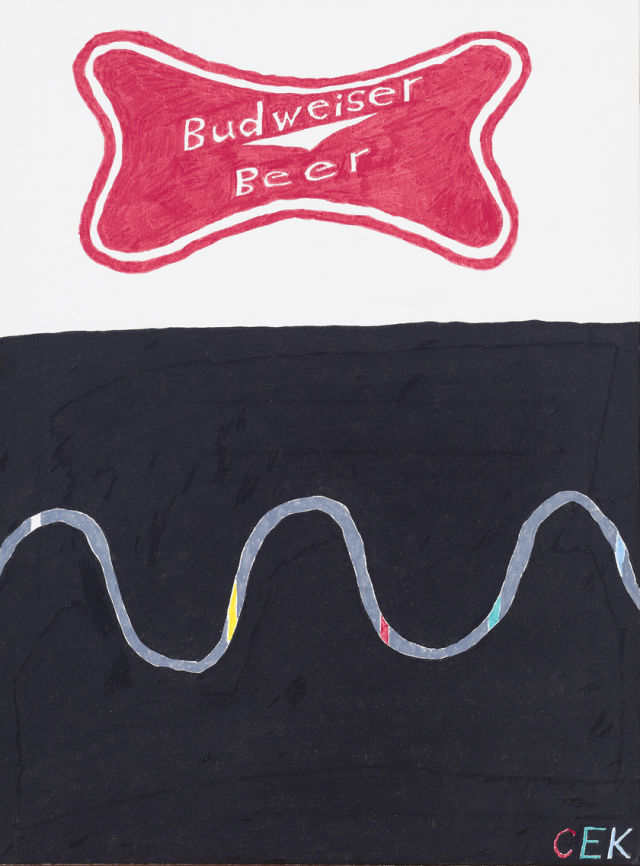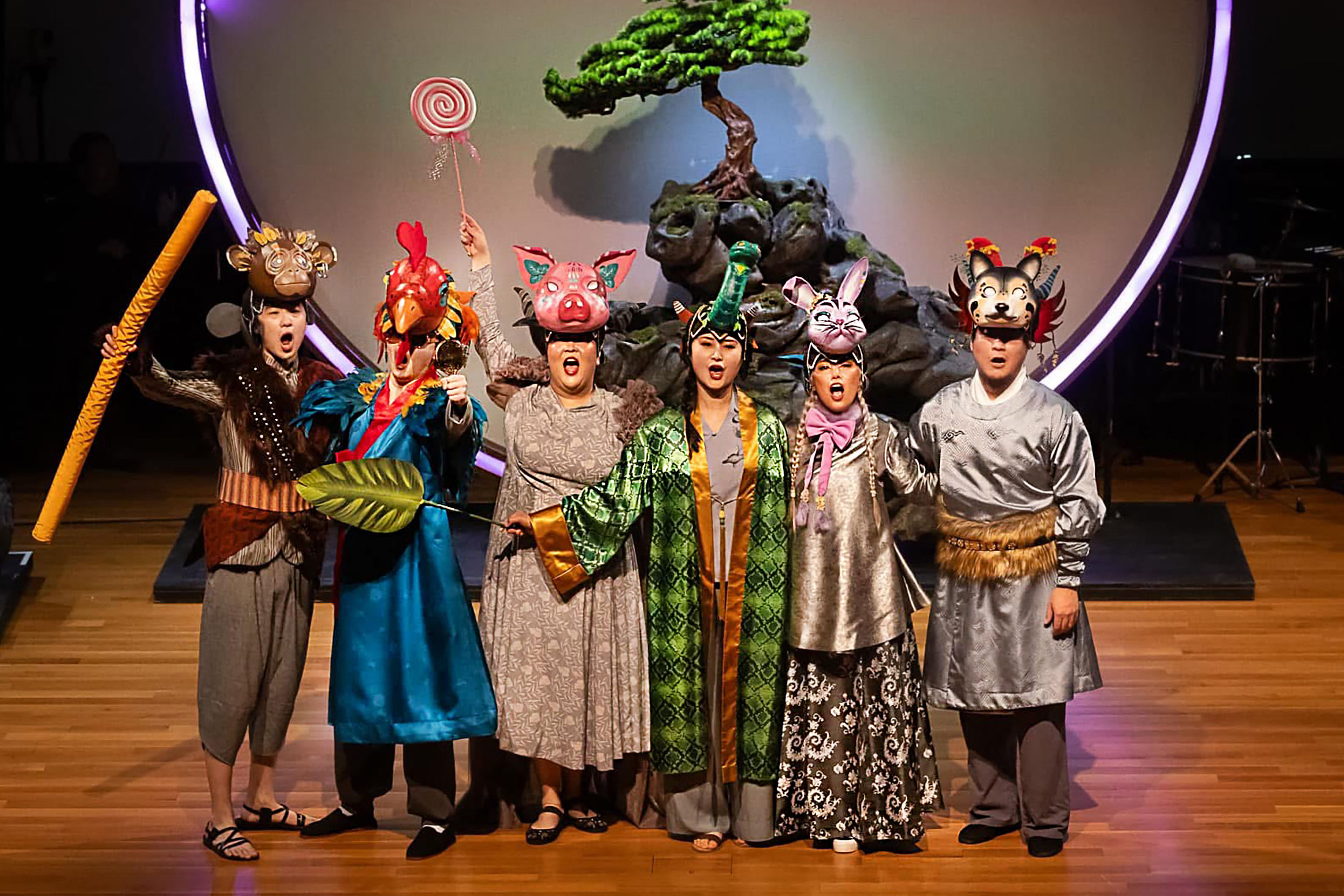Christopher Knowles: In a Word Offers An Intimate Look into an Impenetrable Mind

Christopher Knowles, The Sundance Kid is Beautiful, 2013.
Image: Julian Mommert
Containing works from 1974 to the present day shown only once before coming to the Contemporary Arts Museum Houston, Christopher Knowles: In a Word is a rare opportunity for visitors to enter what theater director Robert Wilson describes as Knowles’s “private kingdom.”
From within that kingdom, one views the world from several perspectives at once. The immersive and complex exhibit of paintings, drawings, sound collages and historical ephemera by the Manhattan-born artist, dancer and poet begins with red and black needlepoint-like patterns on cream colored paper. Upon close observation, they reveal themselves to have been created by a typewriter using just the letter “c.” In another area, hundreds of pages from the New York Times cover the floor and walls of a reconstructed scene from “The Sundance Kid is Beautiful,” Knowles’s solo poetry and dance performance, creating an atmosphere that is more contemplative than chaotic.
On another wall, hung from left to right, smallest to largest—like the rising volume of a panicky voice—is a row of five almost identical but differently sized “Alert” paintings. Knowles uses an oil marker to conjure traffic sign colors and grim words (“Guarded,” “Alert,” “Severe”).

Christopher Knowles: In a Word, installation view, 2015, Institute of Contemporary Art, University of Pennsylvania.
Image: Constance Mensh
Wilson encountered Knowles in 1973 amid attempts to introduce words to his lengthy, nearly silent works for stage. By chance, he heard a recording of Knowles reading an original poem inspired by the artist's sister, titled “Emily Watches the TV.” (“Emily” is one of several audio collages included throughout In a Word.) As a child, Knowles had been diagnosed as autistic, but Wilson immediately recognized a complex, internal pattern to Knowles’s recitation that, when transcribed, presented a consciously composed visual pattern of letters and words. Wilson later invited Knowles, then 14, to join the multidisciplinary theatrical collective known as the Byrd Hoffman School of Byrds. From there, Knowles went on to provide many texts for Wilson’s groundbreaking operas, including his 1976 collaboration with composer Philip Glass, Einstein on the Beach.
For that project, Knowles responded to the question posed by Wilson: “Who is Einstein?” That now-famous text is recited at the beginning of the opera:
“It could get the railroad for these workers. It could be a balloon.
It could be Franky, it could be very fresh and clean, it could be.
I could get some gasoline shortest one.
Al these are the days my friends and these are the days my friends . . .”
— Christopher Knowles, These are the Days
In Knowles’s writing, adjectives become nouns and nouns become verbs, but meaning is never divorced from the individual words, which speaks to Knowles’s genius as a visual poet. “These are the Days,” which is included in In a Word alongside several of Knowles’s other typed texts, could be the copy for a bizarre FM radio commercial, or a call to prayer.
In a Word incorporates several of these historical recordings and audio collages, playing simultaneously in different areas of the museum. The resulting layers compel visitors to “listen to the pictures,” as Wilson once said of his own work. When I visited, the sound throughout the gallery was nicely balanced, allowing visitors to discern the words and musical excerpts.

Christopher Knowles, Untitled, 2012, archival marker on canvas, 24 x 18 inches.
When he joined the Byrds, Knowles also began dancing with Wilson. Interestingly, Knowles's movement—both improvised and choreographed—closely mirrors the physical therapy regimen he began at the age of 6 to learn to crawl, walk and eventually speak. As In a Word’s co-curator Anthony Elms writes in the show’s catalog, “Christopher’s language and movements have always been deeply entwined.” With that in mind, it’s surprising dance is not represented as part of In a Word’s upcoming public programs. However, the show does include video of a recent revival of Einstein on the Beach, as well as several archival photographs of Knowles onstage in performance with Wilson.
All of these pieces come together for a celebration of how one extraordinary individual uses art to describe and communicate with his family, nurture friendships, and navigate the world and all its contradictions. With great care and love, Elms, co-curator Hilton Als, and CAMH’s Dean Daderko have truly provided a gateway into Knowles’s “private kingdom.”
Thru Mar 25. Contemporary Arts Museum Houston. Free. 5216 Montrose Blvd. 713-284-8250. More information at camh.org.




